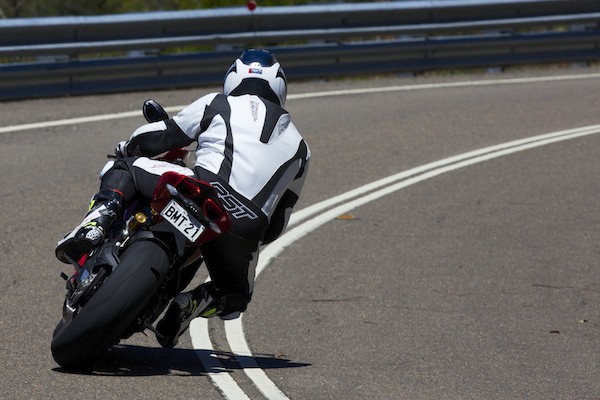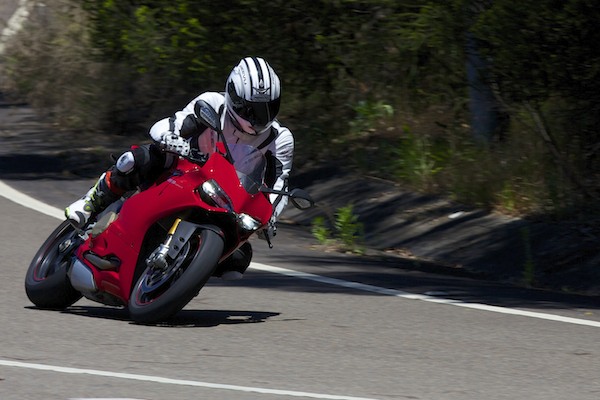DUCATI’S 1199 Panigale is one of the most advanced motorcycles ever built. It boasts electronically adjustable suspension and a V-twin engine with an incredible amount of horsepower. Besides these technological updates, the Panigale was also totally different to the bike it replaced, the 1198.
The name change might have only been one digit but the two machines are worlds apart, at least in design.
The Panigale was much closer to the MotoGP race replica Desmosedici, with the engine much more than just a stressed member of the frame. It this case the structural components of the chassis hang off the engine, not the other way around.

When we tested the Ducati 1199 Panigale in our October 2012 issue we were critical of the harshness of the suspension.
During the test we rode the bike on a variety of road surfaces, both good and bad, and we found the Panigale to be quite a chore to ride when the surface was rough and potholed, but glorious on the smooth stuff.
After the test was published we received letters from Panigale owners telling us we were off the mark.
With so much adjustability available on the Panigale’s riding modes and suspension we started to think maybe we didn’t have the bike set up as well as it could have been.
Did we get it wrong?
The machine in question was the ‘S’ model with electronically adjustable Öhlins suspension (the ‘standard’ 1199 Panigale has regular fully adjustable suspension, 50mm Marzocchi forks and a Sachs shock), so it seemed only fitting that we went back and had another go.
You can read lots about the Panigale’s advanced suspension, like the fact it’s got 43mm Öhlins NIX30 forks and an Öhlins TTX36 shock.
It’s also got a handy adjustable pushrod fixing point which changes the way the side mounted rear shock works, changing it from a progressive rate for the road to a flat rate, preferred for racing or track days.
There are three riding modes to choose from – Wet, Sport and Race. In Wet mode the power is reduced to 120hp, the traction control and electronic engine braking is adjusted to suit. The suspension settings are softened too. In Sport mode you get the full 195hp with a slightly smoothed out power delivery, and all other settings are revised to suit this mode. The suspension is stiffened and the quick shifter engaged. Of course in Race mode you get the track ready suspension settings, and everything is heightened so to speak to suit the track. Tailor made We are no experts on the Panigale but luckily we do know one, Craig McMartin. McMartin is a multi Australian Pro Twins champion, and currently races a Panigale. He is one of the main in-house Ducati Australia experts, so knows a thing or two about these red blooded motorcycles.

McMartin told us the important thing is you can further tailor the system to suit your individual weight and riding parameters. For example, you can tune the suspension in say Rain mode softer than it comes from the factory. McMartin told us that Rain mode was a good choice for bumpy roads because it had a softer power delivery, and if you softened the base settings it coped well in these conditions.
Each riding mode has its own ‘base’ settings from the factory but these can all be changed specifically to suit the rider.
There is a huge range of settings to choose from when it comes to compression and rebound damping. Pre-load is still done the old fashioned way, with a C-spanner for the shock and spanner for the forks, but the damping settings are accessed via the left handlebar switch. It’s all pretty simple when you are shown how, but trying to do it without an expert showing you the way, or at least a comprehensive owners manual would be, and is, a recipe for failure.


Be the first to comment